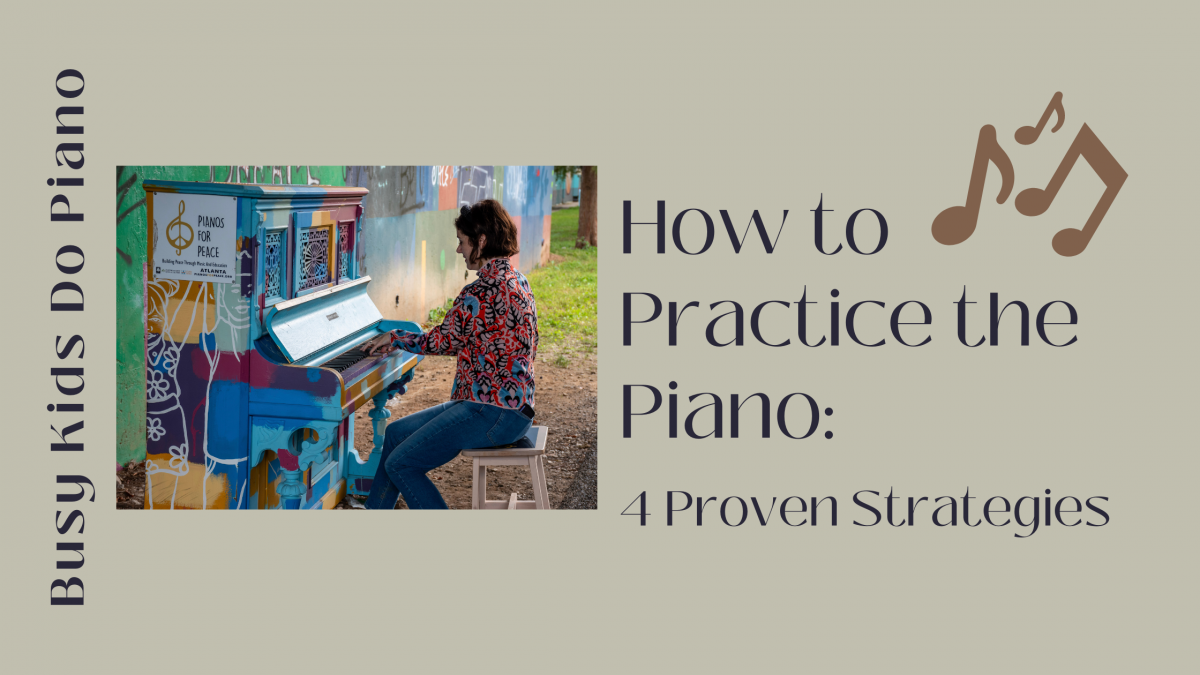Let me share two different scenarios with you….
Student A practices the piano daily for 30 minutes. Her mom sets a timer. She plays through the materials her teachers assigned, but spends most of her time on the things she likes or is already good at in order to pass the time until the timer goes off.
Student B practices the piano daily for no set amount of time. Sometimes it’s just 10 minutes. Sometimes it’s closer to twenty. It all depends on how long it takes him to work through his assignments. He practices the materials his teacher assigns, listens for mistakes and takes time to correct them. He isolates difficult passages, practices them slowly and gives them extra time and attention before moving on.
Even though Student A practiced for more MINUTES during the week, which student do you think improved more over the course of the week?
A fantastic article by Bulletproof Musician sites a study at The University of Texas at Austin that sorted out specific practicing behaviors that distinguished the best players and most effective learners. Interestingly, it found that practicing longer didn’t lead to higher rankings.
What mattered the most was thoughtful, deliberate practice.
So what does that look like, exactly?
The student must be engaged AS THEY PRACTICE the pIANO.
Simply playing a piece beginning to end won’t result in much improvement. This takes mental effort, as a student must listen carefully and be mindful of ways to improve.
Students must identify mistakes and correct them AS THEY PRACTICE THE PIANO.
Researchers found that the more times a student played their piece incorrectly, the worse their ranking tended to be. Taking time to fix mistakes and then practice the passage CORRECTLY allows for improvement.
Slow things down.
There is a variety of ways to correct errors — practicing hands alone or isolating a difficult passage — but the most effective strategy in the top performers of the study was that they practiced SLOWLY. This allows them to work through a passage accurately. It can be tempting for students who have heard how a piece is supposed to sound. Perhaps if an adult or teacher plays it for them, they want to play the piece at that performance tempo right away! But taking the time to start at a slow tempo, listen for mistakes and be thoughtful about the many layers of the piece, makes all the difference in being able to play it beautifully.
Feedback.
Anyone learning to play the piano needs someone to tell them if they’re playing it correctly! This is why I encourage parents of my students — whether they are taking an online course or attending lessons at my studio — to be practice partners for their children. In all of my online lessons, I also play every piece through at the end of the lesson segments so that piano students can provide their own feedback by listening and comparing their playing with the recording.
If your student is engaged during practice, taking the time to fix mistakes, practicing music at a slow tempo and receiving feedback on her work, you will notice tremendous progress in her ability to make music.




